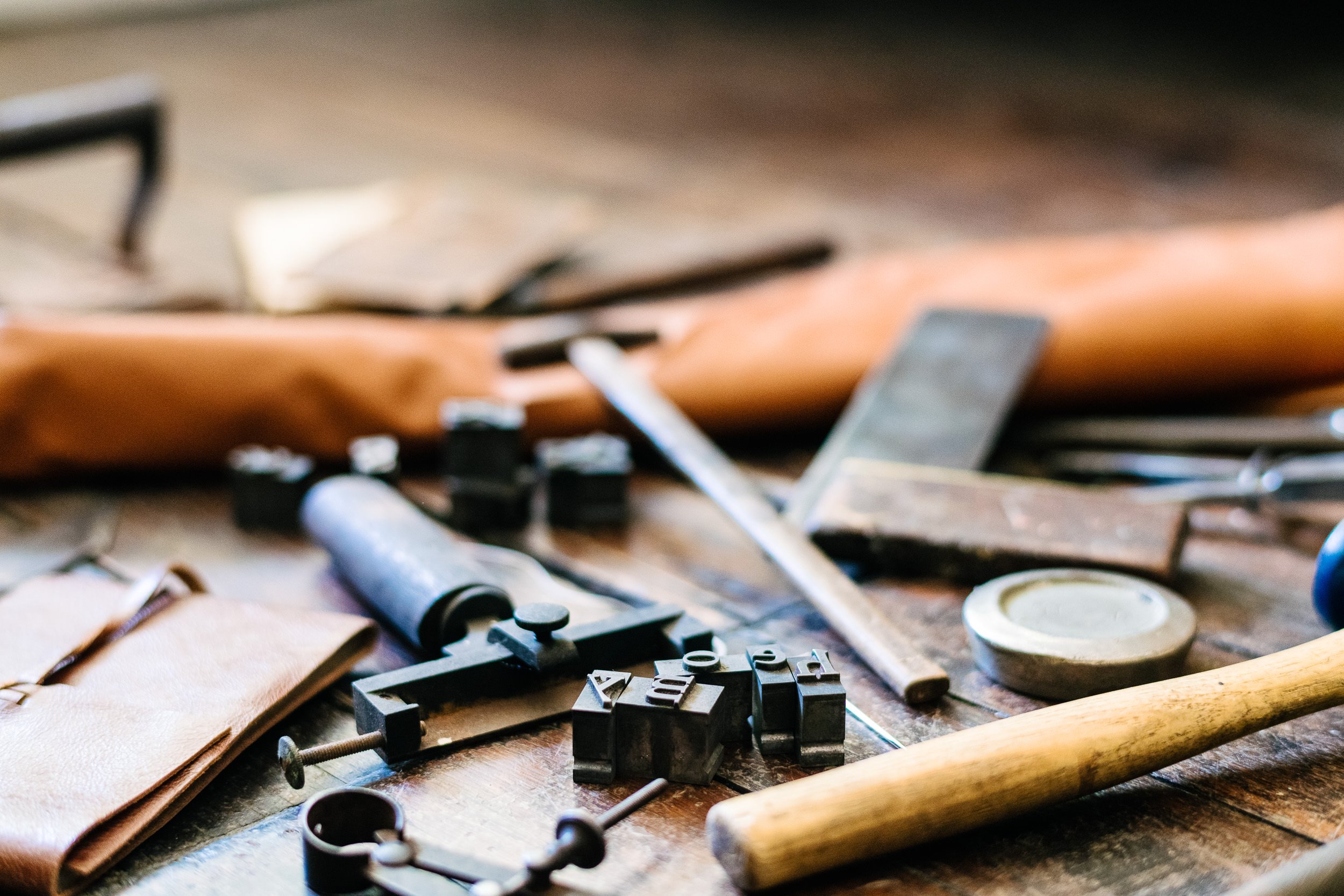10 Essential Bookbinding Tools You Already Own
If you've ever been captivated by the art of bookbinding but felt deterred by the idea of investing in a long list of specialised tools, fear not! In this week’s blog post, I'll reveal that you already possess some everyday items that can serve as essential tools for bookbinding. Whether you're a seasoned bookbinder searching for creative alternatives or a curious beginner eager to dive into this craft, get ready to unleash your creativity using tools you never knew you had. Let's do away with the notion that bookbinding requires a hefty investment and discover the hidden gems right within your reach.
1. Scissors: A sharp pair of scissors is essential for cutting paper, fabric, or thread while bookbinding. Make sure they are comfortable to hold and can cut through different materials. Tailor’s scissors are perfect for this.
2. Ruler: A ruler is handy for measuring and marking precise lines on your bookbinding materials. Look for a sturdy ruler with clear markings.
3. Bone folder: A bone folder is a versatile tool used for scoring and folding paper, creating sharp creases, and smoothing out surfaces. If you don't have a bone folder, you can use a plastic card, the non-serated edge of a butter knife, or a letter opener as a substitute.
4. Needles: Regular sewing needles can work well for basic bookbinding. Look for sharp needles with a small eye suitable for threading cotton or linen thread.
5. Thread: Depending on the type of bookbinding project, you may need cotton or linen thread. Everyday sewing thread can be a suitable substitute if you don't have bookbinding-specific thread.
6. Awl: An awl is used for creating holes in paper or board to sew pages together. If you don't own an awl, a pushpin or a strong needle can serve the purpose.
7. Pencil: A pencil is essential for tracing and marking guidelines on paper or fabric during the bookbinding process. It's useful for measuring and making adjustments before committing with other tools.
8. Glue or adhesive: A decent adhesive such as PVA (polyvinyl acetate) glue or glue sticks can be used for attaching book covers or securing loose pages. Double-check the specific requirements for your project. For long lasting binding we recommend a specific bookbinding adhesive that is archival but any glue is good to start learning!
9. Cutting mat: A self-healing cutting mat provides a protective surface while cutting and trimming materials. It helps prevent damage to your work surface and extends the life of your tools.
10. Clothespins or binder clips: These handy clips can be used to hold pages or sections together while the glue dries. They come in various sizes and are readily available in most households.
Remember, while these tools can get you started with basic bookbinding projects, if you develop a passion for bookbinding, investing in specialised bookbinding tools can enhance your experience. You may even want to try a bookbinding course to help you understand different techniques and uses of a variety of tools. We’ve created a PDF checklist of essential tools you need to start bookbinding, if you’re keen to get started in 2024, you can download the guide below.

